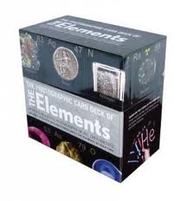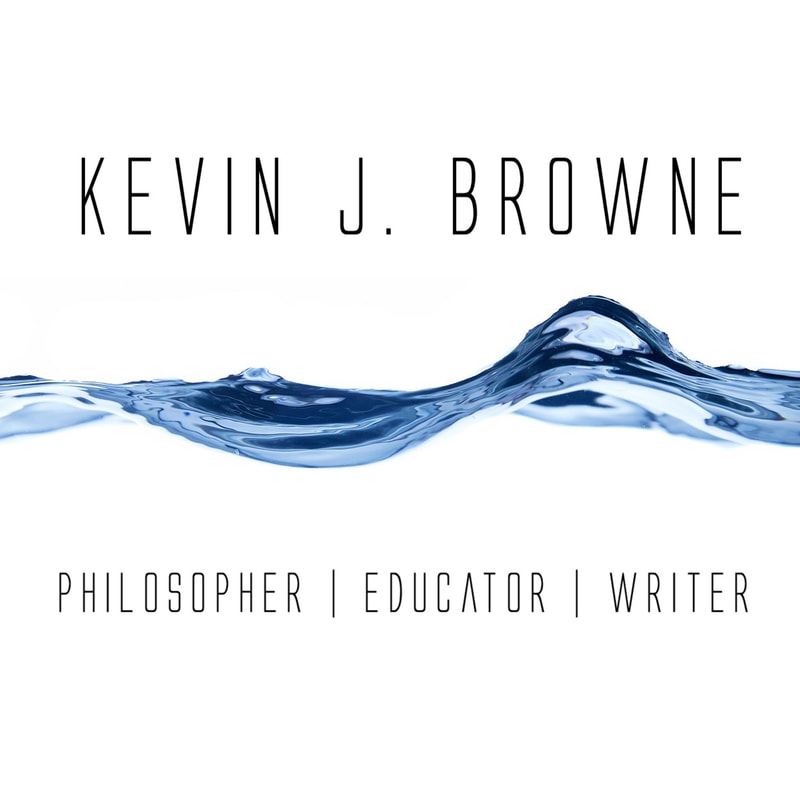|
You can’t read every book. You can’t retain everything you read. Given these facts what counts as being well-read? It’s an interesting question to consider in a world where more and more books are being published every year thus making the goal of keeping up with knowledge nearly impossible. Even if you choose to specialize in one discipline, being well-read in that discipline is extremely difficult. But, is there a way to attain a level of general knowledge that is both achievable and useful? And, what are the benefits of such knowledge?
In an effort to plan a homeschooling curriculum for my daughter I have been thinking quite a lot about such questions. While I have a lot of sympathy for the unschooling movement and interest-led learning I also think it is important to gain a broad exposure to many different subjects and have at least a passing familiarity with the broad concepts in basic academic subjects. One of the chief benefits of such broad exposure is the ability to make connections between subjects you do have an interest in and subjects you find less interesting. As T.S. Elliot once said “No one can become really educated without having pursued some study in which he took no interest. For it is part of education to interest ourselves in subjects for which we have no aptitude.” In my curriculum I have organized the various academic subjects into the following categories: Foundations: Education, Mathematics, Critical Thinking, Language, Life Skills Moral Philosophy: Economics, Ethics, Philosophy, Politics, Psychology, Religion Natural Philosophy: Astronomy, Biology, Chemistry, Geography, Geology, Physics History: American History, World History, Ancient History, Greece and Rome, The Middle Ages, The Renaissance, Women in History, English History Humanities: Art, Literature, Music, Plays, Poetry One of my initial goals for this curriculum was to create a resource list including important books for each subject. To “complete” a course of study a student would need to read a certain minimum number of books in that subject. But, this leads us back to the original question: What does it mean to be well-read in a certain subject area? Can this be reduced to a specific number of books? I think you need to begin any course of study with the stipulation that learning everything about that subject might be a worthy aspiration but it is not a realistic goal. One also has to remember that learning about a subject involves more than simply reading a set of books on that subject. So, you have to have time for things other than reading. Let’s pick as an arbitrary number five books per subject. That comes to 150 books for the set of academic subjects I listed above. At the modest reading rate of 25 books per year that means becoming “well-read” in all of the subjects listed above would take 6 years. I think you could make an argument that a student who went through such a curriculum could not only pass any exam given for any of these subjects at a high school (and possibly college) level but would also be vastly better educated than the average (or even above average) high school graduate. A student who went through this curriculum would not know everything there is to know about each of these subjects but would know enough to see how they were connected and would know enough to be able to learn more about any given subject if they so desired. In other words, they would have a solid educational foundation.
1 Comment
Boring. Painful. Irrelevant.
Learning can be better than that. An example from my experience is unschooling, my daughter. We talk to each other. We read books together. We visit interesting places. And in the process without directly intending it we learn a lot. Here's just a sample of some people/places we've read and talked about over the past couple of years. George Washington, Abraham Lincoln, Leonardo da Vinci, Thomas Edison, Vincent van Gogh, Pablo Picasso, Albert Einstein, Basho, William Shakespeare, Queen Elizabeth, Tutankhamen, Nefertiti, Paul Revere, Annie Oakley, Frida Kahlo, Louisa May Alcott. Rome, China, Florence, Venice, Greece, England, Egypt, The Titanic, Dinosaurs, the Human Body, Stars and Planets, and more. No, I don't give her exams. I don't drill her. We talk, laugh, and spend time together. And learning happens. At some point, we may opt for more structure and more rigor. Meanwhile, we do what comes naturally. And, part of that is learning. Makes you wonder if more kids could benefit from this approach. Image by Jacques GAIMARD from Pixabay
I admit when I was a high school student history bored me as it probably bores many high school and college students today. But, I don't think my boredom was inevitable nor is the boredom of today's students. Boredom is not a central feature of history though it is often central to the teaching of history. This is due in large part to textbooks that lack interest and teachers who lack passion and a skill for storytelling. When you get right down to it, history is first and foremost story. But, this is rarely stressed in the classroom and almost never stressed in the textbooks. Fortunately, there are resources to counter this problem. Let's consider a few which emphasize not only the story aspect of history but also the fact that everything has a history.
Image by Gerd Altmann from Pixabay
You hate math. I get it. But, you probably are basing your intense dislike of math on an extremely limited sense of what math entails. You’ve been taught that math is numbers and calculating. Memorizing difficult formulas and solving word problems about trains going in different directions for no particular reason except to torture you. But, math is much, much more. Math is about beauty. And symmetry. The glorious patterns of nature and movement. Math can enrich your understanding of dance, music, art, and design. But, to appreciate this feature of mathematics you will need to go far beyond the textbook. Not “far beyond” in the sense of advanced mathematics but “far beyond” in the sense of venturing away from the mechanics of mathematics to the underlying point. There are some excellent resources to help deepen your understanding and appreciation of mathematics. Let’s look at a few.
Image by Markus Trier from Pixabay
One way or another there are major changes in store for higher education in the next few decades. Parents with unschoolers may face a different environment for higher education than the one current college students are in. Here's more detail.  It’s a shame these aren't around in some form or another anymore. I loved these cards as a kid and my daughter loves cards of all kinds so this was another good resource for us. I managed to find a good set on eBay and, as a bonus, this set contains a lot of cards of extinct animals that I don’t remember having in my original set. We began by looking through the cards to find the ones of animals we see around us; common birds, deer, squirrels, skunks. Next, we sorted the cards into mammals, birds, reptiles, and so on. Of course, this provides some great early lessons in taxonomy and some basic ideas in evolution such as variety and adaptation. Never hurts to begin laying a foundation. So much of what we learn connects with everything else we learn and this is another good example. Talking about animals leads to talking about extinct animals which leads to talking about things that happened in the past.  This question, or variations on it, was one of my daughter's favorite questions to ask when she was younger. "What is wood made of?" "What is glass made of?" You get the idea. What a perfect opportunity to introduce the elements. Given my daughter's love of cards, The Elements by Theodore Gray is a perfect fit. Of course, many of the elements are unfamiliar and tangible examples don't exist in most people's homes. But, for many of the common elements, there are good examples to bring the concept to life. Among the elements we've found examples of either in pure form or compounds: Silicon: glass windows Iron: kitchen appliances Carbon: diamond ring, graphite shafts on golf clubs Titanium: golf club heads, titanium white paint Copper: deck post caps, pennies, brass statue Cobalt: cobalt glass Nickel: nickels and dimes Gold: pure gold coin, jewelry Silver: pure silver coin Sodium: table salt Chlorine: bleach, table salt Iodine: table salt Phosphorous: matches Potassium: bananas Mercury: thermometer Argon: double glazed windows Calcium: milk Tin: pewter statue Zinc: brass statue So, we have fun with element scavenger hunts. We learn about compounds, chemistry, and connections. The best part for me as a philosopher is my daughter's curiosity and persistent questioning: "What's water made of?" Hydrogen and oxygen. "What are hydrogen and oxygen made of?" Atoms "What are atoms made of?" And so on as far down as we can to or can go. It's a great way to begin building a foundation in the basics of chemistry and physics. I think all children naturally possess the most important traits for learning and the key for parents, as well as formal educators, is not to damage or suppress those traits. After all, these traits will be the most important factors in lifelong learning which is exactly what we should be encouraging in all children and adults. Inquisitiveness: An important part of education is the willingness to ask questions. So many college students I see in the classroom hesitate to ask questions for a variety of reasons but I think success in the classroom and later on in life is directly tied to inquisitiveness. Once children begin asking questions encourage them to keep asking questions. It can be frustrating to be the one always being asked the questions but you don't always have to be the one providing the answers. Let children work on thinking through some of the questions for themselves. Curiosity: The motivation for asking questions should be genuine curiosity. I suspect that a lack of curiosity is what prevents many students from being inquisitive in the first place. You can begin to cultivate curiosity by connecting what you are already interested in to what you are studying. Chances are you will find some surprising connections and using your curiosity will lead you to learn more about the subject you are studying while at the same time learning more about your interests. Passion: In the pursuit of your education you need to be passionate about learning, making connections, asking questions, and finding solutions to problems. Whatever subject you are studying it is possible to find some aspect of it that connects with something you care about. Don’t wait for the professor to make these connections. You need to find them yourself and then use these connections as a starting point for further learning. Creativity: Finally, you need to be creative in your search for connections and answers to questions. Unfortunately, creative thinking is not always rewarded in the classroom where standardized multiple-choice exams are often used to assess learning. But, outside of the classroom creative problem solving is a valuable skill and you need to begin cultivating creative thinking even if this means doing more than is required in the course. You will ultimately benefit from this extra work. This is another question my daughter has been asking lately and another chance for some exploration. We’ve decided to create our own timeline that we can use to fill in events that happen in our lives. But, to allow for the growth of interest and exploration of the past we’ve created our timeline to go back several thousand years into the past. We haven’t talked too much about those distant past times yet but it’s there to fill in when we want to.
At this point, we have such major events as her date of birth, mommy and daddy’s dates of birth, grandparent’s dates of birth. I’ve always had the idea that history could be studied by working backward from where we are now to the recent past and then on back to the more distant past. And examples abound in everyday life to introduce the concept of “back then.” We watch color television now but television wasn’t always in color. In fact, for us, this topic came up as a result of watching some old Andy Griffith Show episodes which are in black and white. Now, when we talk about a long time ago” Teagie likes to ask “was that when there was no color?” It continues to amaze me just how many ways there are into various educational topics if you look for them. I should point out that I don’t look upon everything we do as an excuse to provide a “lesson” or a “lecture” on a topic. I am careful to keep our talks conversational and when she’s ready to move on to something else, we move on. Many times, though not always, she’ll ask about what we were talking about later thus opening the door for a little more information. The concept of time and a sense of history are so fascinating and fun to share! We talk about her first Christmas. “Was that a long time ago?” We talk about dinosaurs and that they are now extinct. “Was that a long time ago?” We talk about how people used to get from here to Europe by boat. “Was that a long time ago?” We talk about who built the pyramids in Egypt. “Was that a long time ago?” So many opportunities for interesting conversations and learning built into that one question. At heart, I am a minimalist and like a neat and clean home. I have even dabbled in Feng Shui which bears out my intuition that a clean and clutter-free house reduces stress and increases one's sense of well-being.
I am also an unschooling dad and recognize the value of the concept of strewing. To expose my daughter to new interesting things, it is helpful to have these new and interesting things close at hand and readily available so she can choose to explore them. Even if she doesn't choose to explore them it's still good to have a variety of things available to spark her interests. So, I have to work at resolving the tension between these two values. I sometimes wonder if other unschoolers face a similar tension. I have read about some families who have solved the dilemma in either of the two obvious extremes. On the one hand, are cases where the family simply refuses to give any ground to the impulse to have a clean and regimented home environment. On the other, the families which forgo, temporarily or permanently, home organization in favor of all-out strewing. To add to the dilemma for me are two other factors. I am a professional educator (teaching philosophy in college) so I recognize the validity of the educational benefits of strewing. I am also an aspiring professional organizer and hope to one day turn this into a side-line where I offer various organizing services to residential clients. Given these factors, I cannot really justify either extreme solution to the problem. The solution our family has opted for which honors both my need for order and our daughter's need for access to various items contains several elements. First, we have a designated playroom where my wife has sewing and craft material and my daughter has plenty of toys, games, puzzles, and books. We have also devoted much of the basement to the craft and play area. The rule for these areas is pretty much "anything goes" as long as there is an area where you can safely walk and get from one part of the room to another. Second, we have a few designated areas where order reigns supreme. Our formal living room has built-in bookshelves and so is "the library." This room also serves as my music studio where I have my iMac computer and keyboard. Here there is no clutter and no strewing. Third, bedrooms are clutter-free zones which is in accordance with good Feng Shui principles. Bedrooms are for bedroom activities and nothing else. We have no electronics in the bedrooms. Our daughter's bedroom has several bookshelves but items kept there are kept neatly on the shelves and returned when we are through with them. Toys are replaced in the toy chest. The room is very restful and relaxing as a bedroom should be. Fourth, we have the "hybrid" areas of the house which can go either way. We strew things in the kitchen and family room but we can also quickly clean these rooms up for other activities. All in all, this system seems to work well for everyone. I am happy to sacrifice a little of my need for order to benefit my daughter's need for a variety of easily accessible items to play with and explore. Have you had similar issues with reconciling a need for order and a need for strewing? How have you resolved them? I'd love to hear your ideas! |
KEVIN J. BROWNEPhilosopher / Educator These blog posts contain links to products on Amazon.com. As an Amazon Associate I earn from qualifying purchases.
Categories
All
Archives
April 2023
|










 RSS Feed
RSS Feed
















